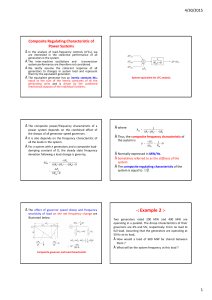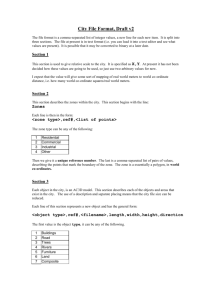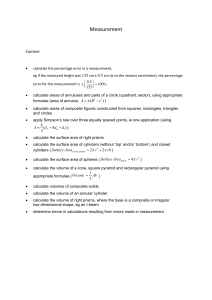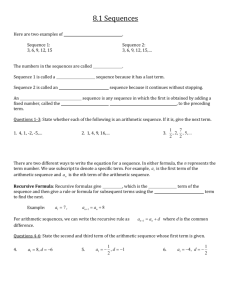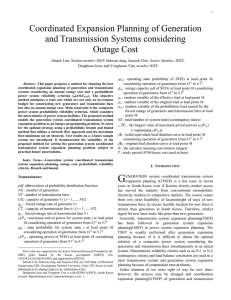ELEMENTAL COMPLETE COMPOSITE NUMBER GENERATORS
advertisement
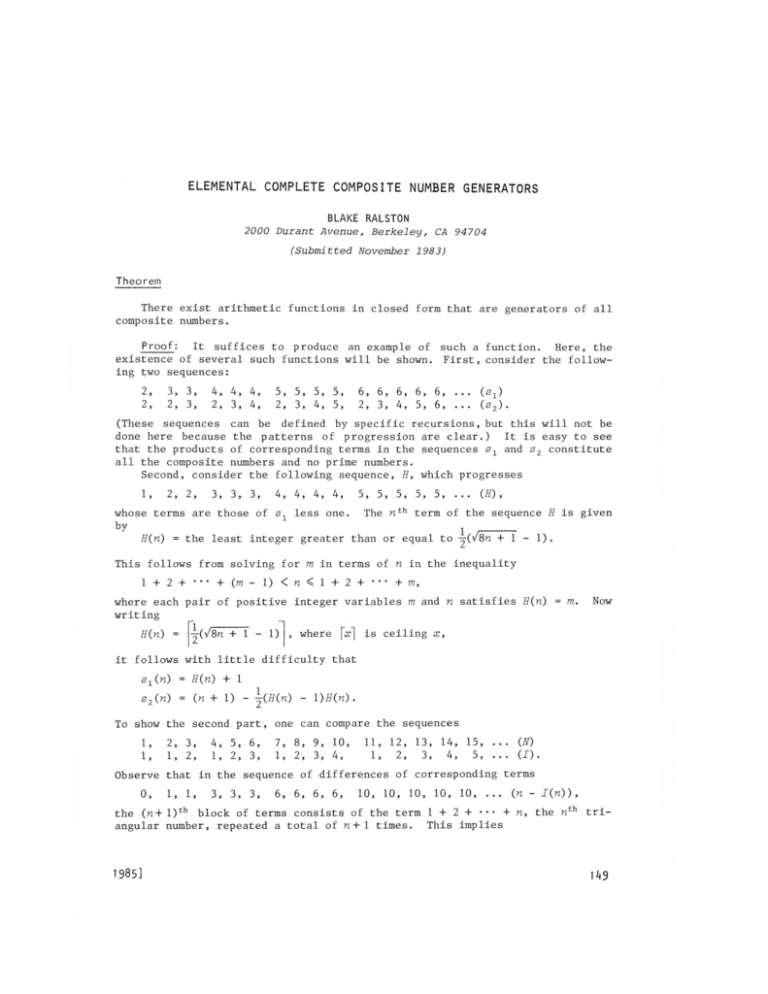
ELEMENTAL COMPLETE COMPOSITE NUMBER GENERATORS
BLAKE RALSTON
2000 Durant
Avenue,
(Submitted
Berkeley,
November
CA 94704
1983)
Theorem
There exist arithmetic functions in closed form that are generators of all
composite numbers.
Proof: It suffices to produce an example of such a function. Here, the
existence of several such functions will be shown. First, consider the following two sequences:
2,
2,
3, 3,
2, 3,
4, 4, 4,
2, 3, 4,
5, 5, 5, 5,
2, 3, 4, 5,
6, 6, 6, 6, 6, ... (s±)
2, 3, 4, 5, 6, ... (s 2 ).
(These sequences can be defined by specific recursions, but this will not be
done here because the patterns of progression are clear.) It is easy to see
that the products of corresponding terms in the sequences Sj^ and s2 constitute
all the composite numbers and no prime numbers.
Second, consider the following sequence, E, which progresses
1,
2, 2,
3, 3, 3,
4, 4, 4, 4,
5, 5, 5, 5, 5, ... (H),
whose terms are those of s1 less one. The n t h term of the sequence H is given
by
1
H(n) = the least integer greater than or equal to ^(VSn+l
- 1).
This follows from solving for m in terms of n in the inequality
l+2+'-*+(w-l)<n<l+2+° --+w,
where each pair of positive integer variables m and n satisfies H(n) = m.
writing
H(n) =
j(V8n
Now
+ 1 - 1) , where [x] is ceiling x,
it follows with little difficulty that
s1(n)
= H(n) + 1
s2(n)
= (n + 1) - |(#(n) - l)tf(w).
To show the second part, one can compare the sequences
1,
1,
2, 3,
1, 2,
4, 5, 6,
1, 2, 3,
7, 8, 9, 10,
1, 2, 3, 4,
11, 12, 13, 14, 15, ... (N)
1, 2, 3, 4, 5, ... (J).
Observe that in the sequence of differences of corresponding terms
0,
1, 1,
3, 3, 3,
6, 6, 6, 6,
10, 10, 10, 10, 10, ... (n - J(n)),
th
the (n+ l)
block of terms consists of the term 1 + 2 + ••• + n, the n th triangular number, repeated a total of n+ 1 times. This implies
1985]
149
ELEMENTAL COMPLETE COMPOSITE NUMBER GENERATORS
n - Tin)
= ~(H(n)
- 1) • ((H(n)
- 1) + 1)
or
I(n)
= n - j(H(n)
-
l)H(n).
Multiplying together the two formulas for s1(n)and s2(n),
product terms occurs:
s1M
• s2(n)
= (H(n)
+ 1) • (n + 1 - ~(H(n)
-
some cancellation of
l)H(n)\
= (H(n) + l)(n + 1) - |(#(n) - l)H(n)(H(n)
+ 1)
= n#(n) + w + H(n) + 1 - -|(#3(n) - H(n)) .
This gives a complete composite number generator
C(n) = s±(n)
• s2(n) = (n + 1) + (n + | W w ) - | F 3 ( n ) .
For comparison, a similar function which generates the positive integers—not
in their natural order and with repetitions—is
N(n) = H(n) • I(n)
= nE{n)
+ ~E2{n)
- ^ H3 (n) .
Alternative arithmetic generators of all the composite numbers can be found by
considering sequences such as
2,
3, 2, 4, 3, 2,
[here, s2(n) + s 3(ri)
5, 4, 3, 2,
6, 5, 4, 3, 2, ... (s3)
= s (n) + 2]
and substituting s3(n) in place of either one of s2(n) or s1(n) in the product
s1(n)s2(n). Following from its relation with s 2 (n), an arithmetic functional
form for s3(n) is found to be
s3(n)
= (-w + 2) + ^H(n)(H(n)
+ 1).
Other complete composite number generators in closed arithmetic form are then
given by
= s1(n)
• s3(n)
= (-n + 2) + (-n + J-Wn) + H2(n)
C(n) = s2(n)
* s3(n)
= (-n2
C(n)
150
+ n + 2) +
+ |-#3(n)
| #(n) + (n - ^\H2(n)
- j Eh (n).
[May

